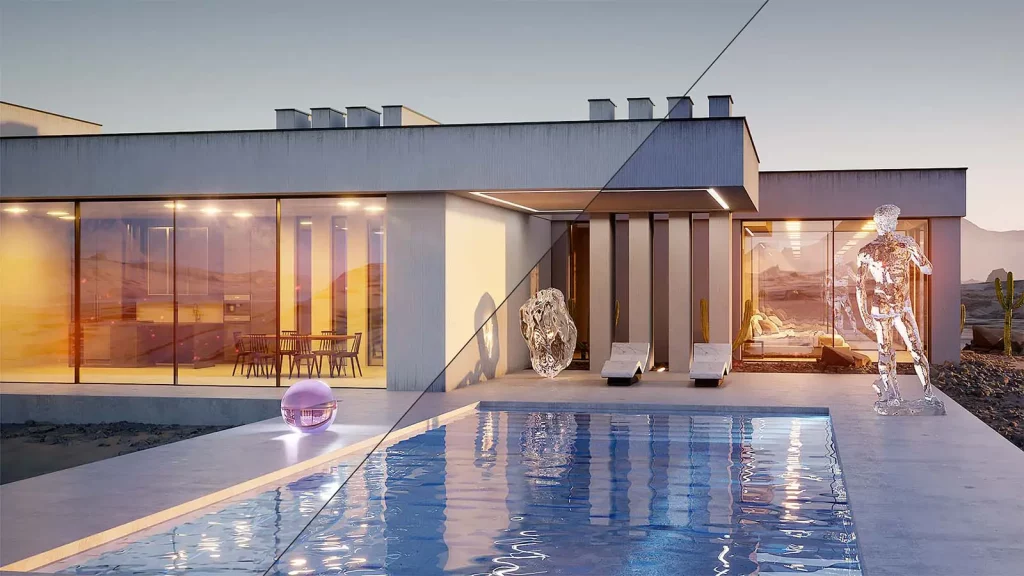Сomparison Unreal Engine 5 Lumen vs Corona Render for Architecture rendering
Have you ever wondered if the Unreal Engine can provide the same quality as Corona or Vray under equal conditions? In this video, I aimed to answer this question by creating the same scene in both 3DS Max with Corona and Unreal Engine to compare the results. The scene consisted of a house with glass elements and a swimming pool, allowing for a comparison of reflections, refractions, lighting, global illumination, and shadows in both rendering engines.
To ensure a fair comparison, I refrained from using render elements or compositing in Photoshop. The goal was to obtain an image that required minimal post-processing, focusing on brightness, contrast, and color correction.
In 3DS Max with Corona, I used assets from the Quixel Megascans library for the environment and decals. I utilized the Corona Sun and Skylight Environment map for natural lighting and sky generation, adjusting parameters to achieve softer lights and shadows. I also incorporated Corona Volumetric Material for fog and Corona Decal with Megascans textures for the effect of dirt on the house’s facades. The render settings were configured for a 4K resolution, with a Pass Limit of 40.
The scene was then recreated in Unreal Engine, using the same Megascans assets and applying materials in a similar manner to the Corona scene. I employed the SunSky tool for natural lighting and sky, ExponentialHeight Fog for fog effects, and Rect Light for artificial lighting. The position of the sun and cameras was kept consistent with the Corona scene, and I imported them using Datasmith Direct Link Import.
Comparing the render times and resource usage, Corona utilized CPU resources for rendering, while Unreal Engine utilized GPU resources. Corona took a total of 21 minutes and 34 seconds to render all images, while Unreal Engine completed the task in just 49 seconds. This resulted in Unreal Engine being 27 times faster than Corona in this scenario.
In terms of quality, the Unreal Engine render exhibited a brighter sun and warmer colors. The mountains in the background looked more impressive in Unreal Engine, and the Megascans assets appeared more realistic. The reflections in Corona were more detailed, but the Unreal Engine rendering was cleaner and sharper. The glazing looked better in Corona, and the pool water was more visually appealing in Unreal Engine.
Analyzing specific camera views, Corona showcased superior reflections and lens effects, while Unreal Engine had artifacts in light and shadow calculations. However, Unreal Engine’s lighting and global illumination were praised for their beauty. By switching to Ray Tracing, Unreal Engine’s reflections improved significantly, resulting in a render time nearly 7 times faster than Corona.
In conclusion, the Unreal Engine proved to be a flexible and powerful tool for architectural rendering and project presentation. It significantly reduced scene composition time and achieved render times 7 to 20 times faster than 3DS Max with Corona. Despite some artifacts, the speed of obtaining results and the overall quality made Unreal Engine an indispensable solution. The source files for this project are available for download.
I hope you found this comparison interesting and informative. Please share your preferred option in the comments.

